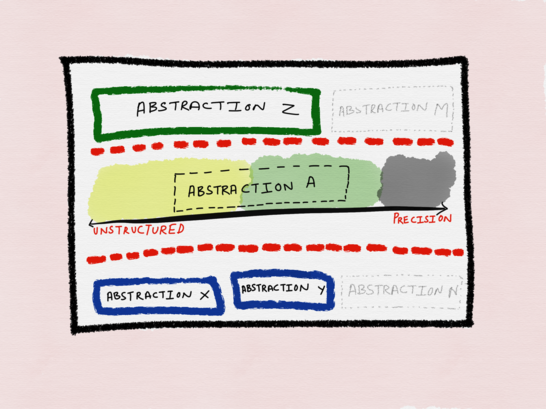Zoom image will be displayed
Ask someone what a designer does and they’ll describe artifact creation: boxes, colors, wireframes, mockups. The designer puts together the visual representations of what products should look like. This understanding of design — as the manual assembly of interface elements — is dying in real time.
That version of design is already past tense. But not everyone knows it yet.
There’s a clear parallel in art history. Before photography, European painters spent centuries perfecting the craft of realistic representation — mixing pigments, mastering perspective, capturing light with painstaking accuracy. When the camera arrived in the mid-19th century, it automated the perspectival process that had defined painting for generations.
Did painting die? Only if you confused painting with the act of depositing realistic marks on canvas.
The camera liberated painters from representational obligation. Suddenly, artists could explore what painting could be rather than what it had always been. Impressionism emerged. Then abstraction. Then conceptual work where artists might hire others to execute their visions entirely. The heart of painting — expression, beauty, meaning — not only survived but flourished once freed from manual replication.
AI is the camera for design. It automates the pixel-pushing, the layout generation, the icon creation. And just as photography revealed that painting was never really about realistic representation, AI reveals that design was never really about making artifacts.
Design is about crafting solutions. It’s about taking complex, ambiguous problems and synthesizing approaches that work for real people in real contexts. The designer’s core skill is alignment — bringing teams together around visions, making choices that serve users while satisfying business constraints, and maintaining the integrity of digital experiences.
This deeper understanding of design becomes more crucial as AI floods our screens with automatically generated interfaces. Choices still need to be made. Vision still requires human judgment. Teams still need leadership around shared goals. The social and rhetorical dimensions of design work — the agency required to advocate for users and coordinate cross-functional efforts — become the designer’s primary domain.
Some people who called themselves designers will discover they were never really designers at all. They were proficient with tools like Illustrator and Figma, but weak at problem-solving, consensus-building, and stakeholder management. Meanwhile, many people who understood design conceptually but never developed the manual skills can now step into the role.
The barrier to entry drops while the skill ceiling rises.
Moonchild is a design tool built for this new reality. It allows you to explore vast solution spaces, synthesize possibilities from your existing design systems, codebases, and the broader web, then bring these explorations together for team consideration and iteration.
The tool has two phases: synthesis and integration. In synthesis, you can generate new elements, pull from your Figma libraries, import from React components, or capture any web page and bring it into your design space. You’re not constrained by starting from scratch or working within predetermined templates.
Real design has always been about solution crafting and team alignment. Moonchild is a reboot of design tooling with that goal in mind. Designers take the infinite possibility space of how products might work and focus organizational energy toward specific visions. They advocate for users, coordinate between stakeholders, and maintain quality standards across complex systems. What began over a decade ago with design systems reaches its culmination with this next generation of design tools that fully liberate designers from laborious management of detail.
As we spend more of our lives mediated by screens, interface quality becomes a matter of cultural preservation. Bad design isn’t just annoying — it degrades the texture of daily experience for billions of people. Just as AI can generate mediocrity at scale, it can also enable breakthrough experiences when guided by human judgment and taste.
The new designer harnesses AI’s creative power the same way conceptual artists harnessed photography — not as replacement for human vision, but as liberation from manual constraints. They integrate fundamentals of light, color, hierarchy, and organization to realize shared visions and improve people’s lives.
Design is dead. The designer who confused practice with production is obsolete. But design itself — the deeper practice of creating solutions that serve human needs — has never been more essential.
Long live design.
Moonchild is in development. If you’re interested in joining this evolution of design practice, we’re working with forward-thinking designers and teams to shape the future of digital product creation.
.png)


